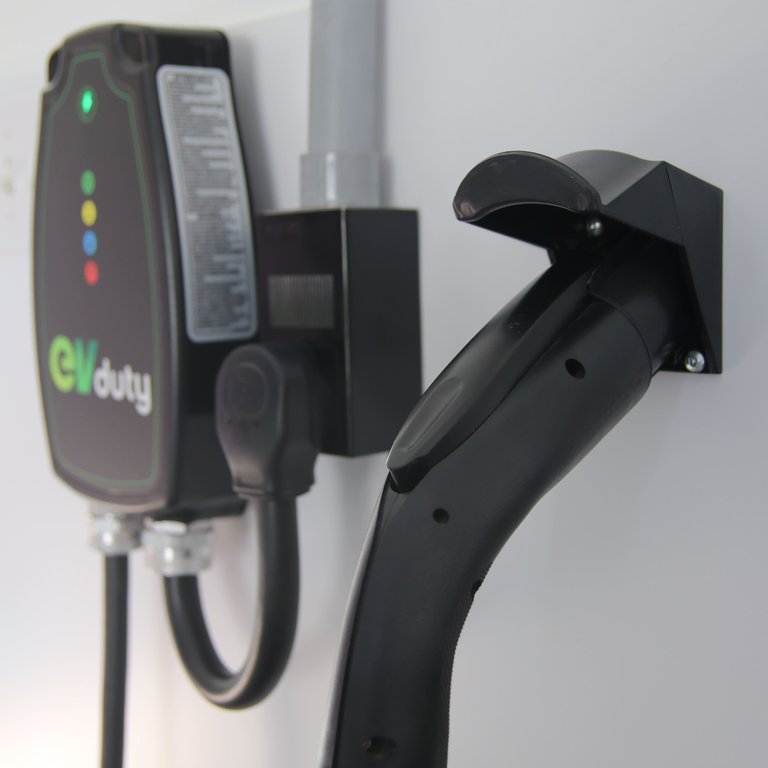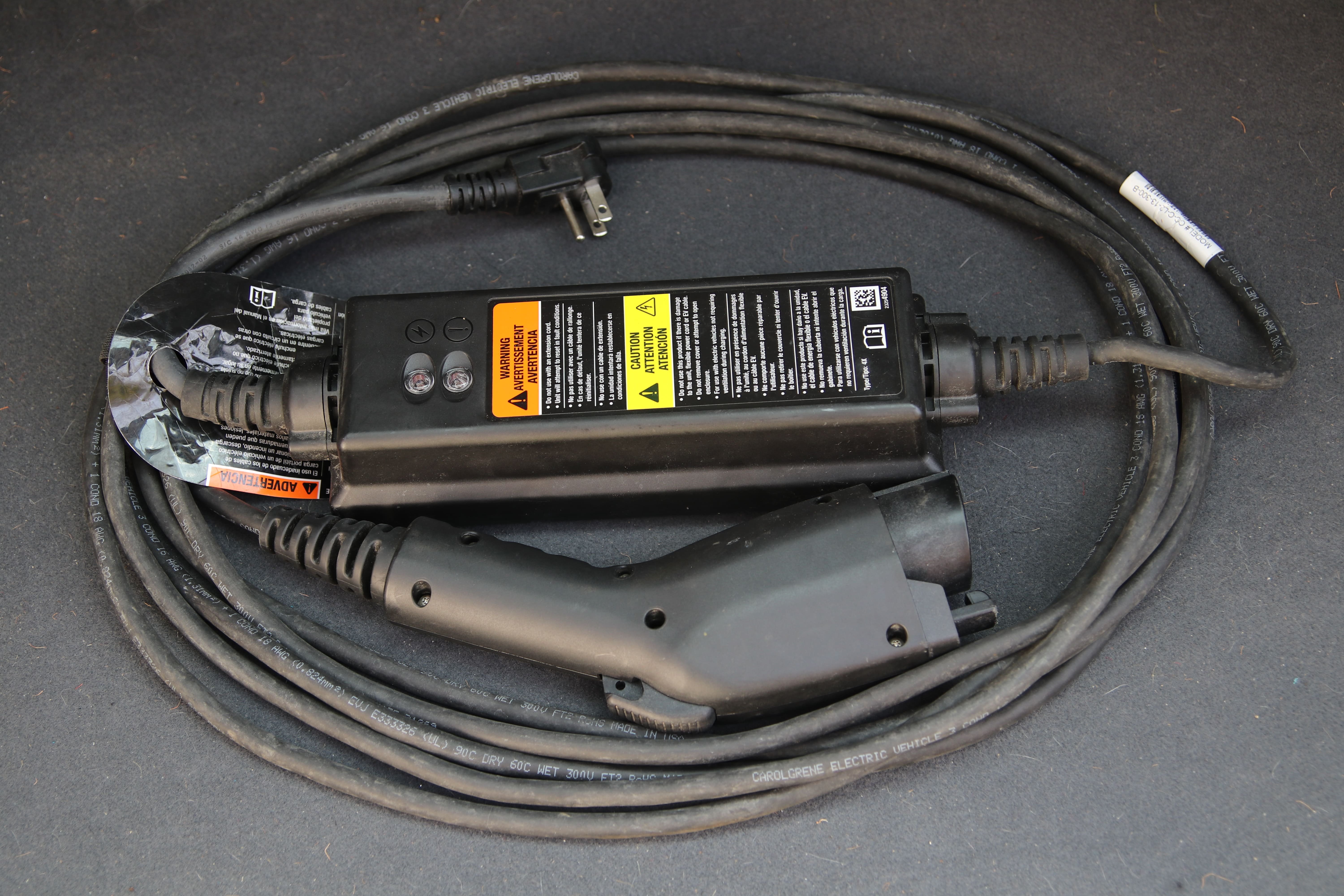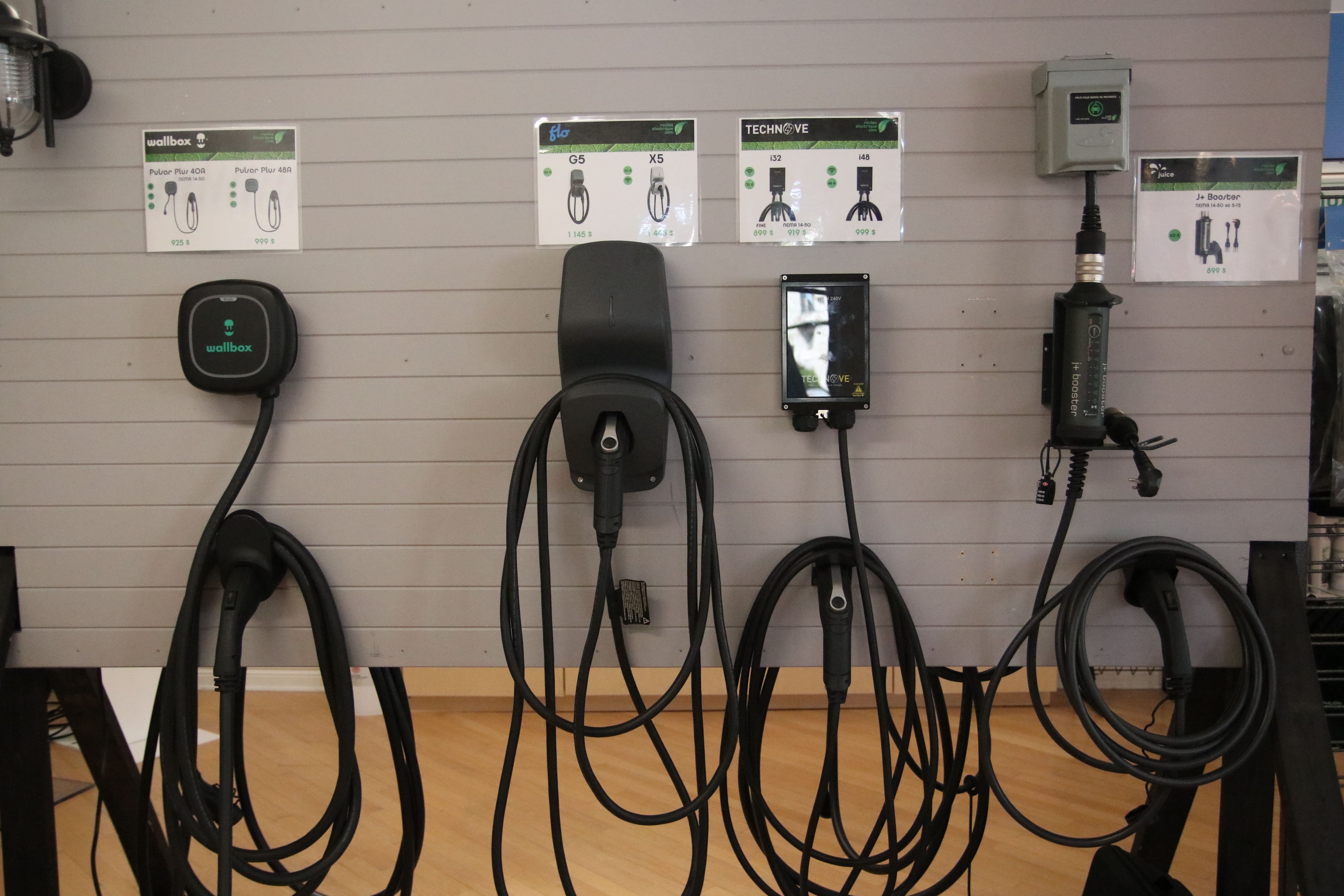
Choosing a Home Charger for Your Electric Vehicle
22 July 2024
A variety of electric vehicle (EV) chargers are now available on the market, many of them made in Canada. Not only can it be difficult to find your way around all the features, but it's also important to ask yourself a few questions before choosing your home charger.
Everything to know on charging station levels
There are three levels (or “types”) of charging stations.

Level 1 - EVs are usually sold with a portable charger that allows the vehicle to be charged from a standard 110V socket. 110V is mainly used for charging plug-in hybrids with a limited range and as last resort as charging takes quite a long time. We recommend leaving the portable charger in the vehicle at all times.

Level 2 - A home charger is a Level 2/240V charging station. 240V charging stations also exist on the road and are part of the public charging network. This is the type of charging station we will be talking about in this article.
Level 3 - Level 3 charging stations are direct current fast chargers (DCFCs) that can also be found on the road, where you can charge in just a few minutes. This type of charger cannot be installed at home.
How many amps should my EV charger be?
The most popular residential chargers have a power of 7.2 kW (30A), enabling a 100% electric vehicle to be fully recharged in 6 to 11 hours. This power level is suitable for most plug-in vehicles, although some plug-in hybrids are only equipped with a 3.3 kW (15A) on-board charger.
First-generation plug-in hybrids will be able to use this type of charger, but they will only use half the power of a 7.2 kW charger, which means that charging will be slower. We still recommend installing a 7.2 kW charger, so that you don't have to change it when you buy a new vehicle.
Charging stations from 9.6 kW (40A) up to 11.5 kW (48A) are also available to take advantage of the more powerful on-board chargers found on new EV models. In fact, 11 kW chargers are becoming the norm on new models. There are even oversized vehicle models with 19 kW chargers. Greater power means shorter charging times, although this advantage comes with additional installation constraints (and costs). Given that most of the charging sessions take place at night, the benefits of shorter charging times may not be worth it.
A concrete example of charging sessions with two different chargers
Here's a concrete example of charging at night - as is the case most of the time - with two chargers of different power.
With 10 hours of overnight home charging, the 7.2 kW charger has the capacity to supply 72 kWh, while the 11.5 kW charger will supply 115 kWh, which is well above the capacity of most vehicles, as well as the range needed daily for most people.
In other words, an average car with a 77 kWh battery plugged in at 6 p.m. when completely discharged would be fully charged at 5 a.m. with a 7.2 kW charger. With an 11 kW terminal, the car would reach full capacity at 1 a.m., in the middle of the night. If we only charge to 50%, which is enough to cover the average daily distance for most people, the vehicle will be charged at 11 p.m. with a 7.2 kW charger and at 9 p.m. with an 11 kW charger.
Considering that, in any case, your car will be fully charged when you wake up in the morning, it's best to choose a charging station whose charging is spread over a longer period, to better distribute the overall energy demand throughout the night.
When it comes to installation costs and constraints, a more powerful charger can pose certain challenges. For example, more amperage takes up more space in the electrical panel and requires larger-gauge wiring. You'll need to check whether your electrical installation has the capacity for the desired charging power.
|
Power |
Circuit Breaker |
Minimal Gage (wiring) |
|---|---|---|
|
7.2 kW (30A) |
40A |
No 8 |
|
9.6 kW (40A) |
50A |
No 6 |
|
11.5 kW (48A) |
60A |
No 6 |
|
19.2 kW (80A) |
100A |
No 3 |
Smart and connected chargers
Charging station manufacturers offer smart and connected models that can be controlled remotely using a smartphone. The connection between your smartphone and your charger is usually via Wi-Fi.
Connected charging stations play a complementary role, thanks to the applications that usually come with the car and enable you to start or program a charging session, preheat your vehicle, and so on. They can also control the power supplied by the charging station and share power between several compatible stations.
Some connected charging stations are compatible with electricity service, which saves money by automatically modulating EV charging according to Hilo (2) challenges.
Smart charging stations will become essential as EVs become the norm, as they are very useful for scheduling off-peak charging and helping to reduce pressure on the grid during periods of high demand (usually mornings and evenings).
It is not necessary to have a smart charging station, although this type of station should save you money in the future with electricity programs such has Hydro-Quebec and the Hilo service in Quebec, by scheduling charging outside peak periods. The extra cost of an intelligent charging station would quickly be amortized. In the absence of a smart charging station, however, it is essential to ensure that your vehicle is equipped with an application to manage charging sessions.
Which charging station brand to choose?
We invite you to browse our catalog of Canadian charging stations.
If you choose brands and models other than those featured in our catalog, we strongly recommend choosing a product suitable for cold weather conditions, so that the cable can be handled easily, and the charging station can function properly in demanding winter conditions.
It may also be preferable to choose a charging station made in Canada to ensure quick and easy access to good customer service in the event of a problem. Obviously, if you've opted for a Tesla vehicle, a Tesla charger could be a good choice.
|
Questions to ask before purchasing a home charger Here are a few questions to ask yourself before buying a charging station: • Is the charging station eligible for financial assistance under the Roulez vert program • How much cable do I need between where my vehicle will be parked and where the charging station will be installed? • What warranty is offered on the charging station, and what customer service is provided in the event of a breakdown or problem? • Will I need a portable charger? If you have a cottage or a friend who has a stove (NEMA 14-50) or welder (NEMA 6-50) outlet, you can easily bring your portable charger from home to charge your EV. |
In conclusion, 7.2 kW (30A) charging stations are suitable for the vast majority of electric vehicles. In most cases, there is no need to invest in a more powerful charging station, which will be costly and complicated to install, and will place greater demands on the electrical grid, when it is preferable to spread energy demand over the night. Instead, opt for a smart charging station that will enable you to participate in the collective effort to reduce energy demand during peak periods.
For more information on purchasing and installing a home charger, visit the dedicated section on our website.
---
(1) 2023-2030 Québec’s Electric Vehicle Charging Strategy
(2) The Hilo charging solution: https://www.hiloenergie.com/en-ca/help-center/products/evduty-home-charger/what-is-the-hilo-smart-solution-for-electric-vehicle-charging-stations/
